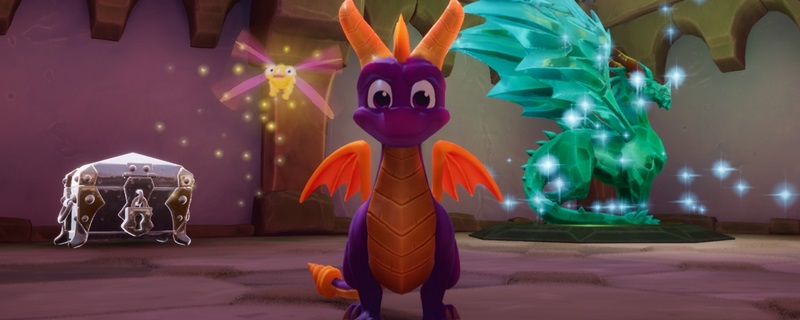Spyro Reignited Trilogy PC Performance Analysis
Conclusion
The Spyro Reignited Trilogy has finally brought everyone favourite purple dragon to PC, but not without issues. While the game looks great on paper, offering support for an unlocked framerate and higher resolution options than the game’s console counterparts, it sadly falls short in its execution.Â
While stretching this game to 4K and 60Hz may sound like a good thing, the game’s problem is that unlocked framerates come at a cost. When playing Spyro with unlocked framerates, we found that many of the game’s animations broke down. Spyro would slide on all terrain, as if it were ice, and several key animations would break down. At best this would make the game look strange, such as upward-facing flame breaths from Spyro, and at worst it prevents in-game events and game progress. Â
To address this issue we had to enable V-Sync within Spyro’s Reignited Trilogy. This allowed the game to play normally, but at the cost of a 60FPS framerate cap on our monitor and the loss of unlocked framerates. Thankfully, this allowed the game to run normally, delivering is the 60FPS experience that the game promised, which feels a lot better than the 30 FPS framerate that the console version offers.Â
Performance-wise, the Spyro Reignited Trilogy is relatively easy to run. 1080p60 is easily achieved on AMD’s Radeon RX 580 and Nvidia’s Geforce GTX 1060 while 1440p 60FPS was achievable on our RX Vega 56 and Geforce GTX 1080 respectively. A constant 4K60 is a more challenging task, but our RTX 2080 Ti was more than up to it. These performance numbers come from tests using the game’s Ultra preset.Â
Graphically, both Spyro’s Ultra and High presets look almost identical to each other. The only major graphical change in most cases is foliage draw distances. This explains the minor performance changes when moving from these two presets. Medium comes with greater performance benefits but at the cost of more graphical downgrades. Even so, the Spyro Reignited Trilogy looks good at Medium settings. With Medium settings, Spyro’s Reignited Trilogy can run at 1440p 60FPS on a GT 1060. Â
 Â
Spyro’s low preset is not worth using, even with its huge performance benefits. This preset takes several graphics cutbacks too far, resulting in sub-par visuals. This preset should only be considered if you are desperate. Perhaps this will make the game playable on some low-end integrated graphics solutions.Â
Like many Unreal Engine 4 titles, the Spyro Reignited Trilogy tends to prefer Nvidia graphics cards to their Radeon counterparts. In our testing, Nvidia’s GTX 1060/1070 outperformed their Radeon counterparts, the RX 580/RX Vega 56 in almost all cases. The architectural advantages of Turing also fail to come into play in the Spyro, which makes sense given the game’s relative graphical simplicity.Â
VRAM-wise, the game uses around 3GB of VRAM at 1080p, and barely went over 4GB that at higher resolutions. Even at 4K, the Spyro Reignited Trilogy failed to make use of more than 4.5GB of VRAM.Â
Performance-wise, the Spyro Reignited Trilogy runs as expected given the resolution/framerate targets of the game’s console versions. This makes 60FPS framerates relatively easy to achieve on modern gaming hardware. Even so, this is ruined by the fact that the game’s animations are currently broken when we play the game without V-Sync turned on. This kind of fault should not have been shipped with the game on PC. We have already seen several Steam reviews point out this fault, and as it stands the only mitigation that we have found is activating V-Sync. A modern PC game should not release with this kind of issue.Â
What we have here is a flawed PC port, but at least, for now, we know how to mitigate the faults within the Spyro Reignited Trilogy. Hopefully, Iron Galaxy will work to address these issues in an upcoming patch.Â
You can join the discussion on the Spyro Reignited Trilogy’s PC performance on the OC3D Forums.Â



